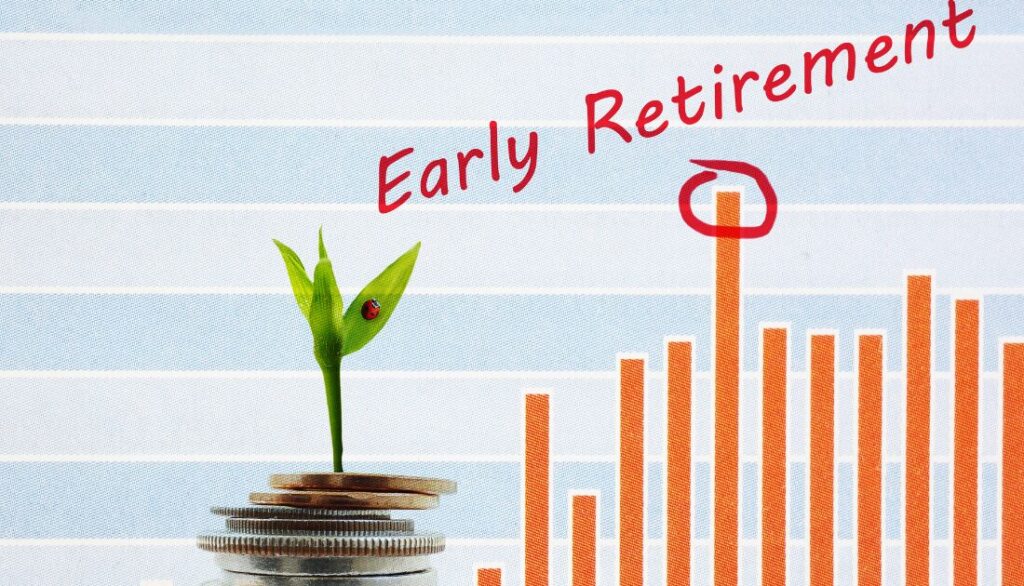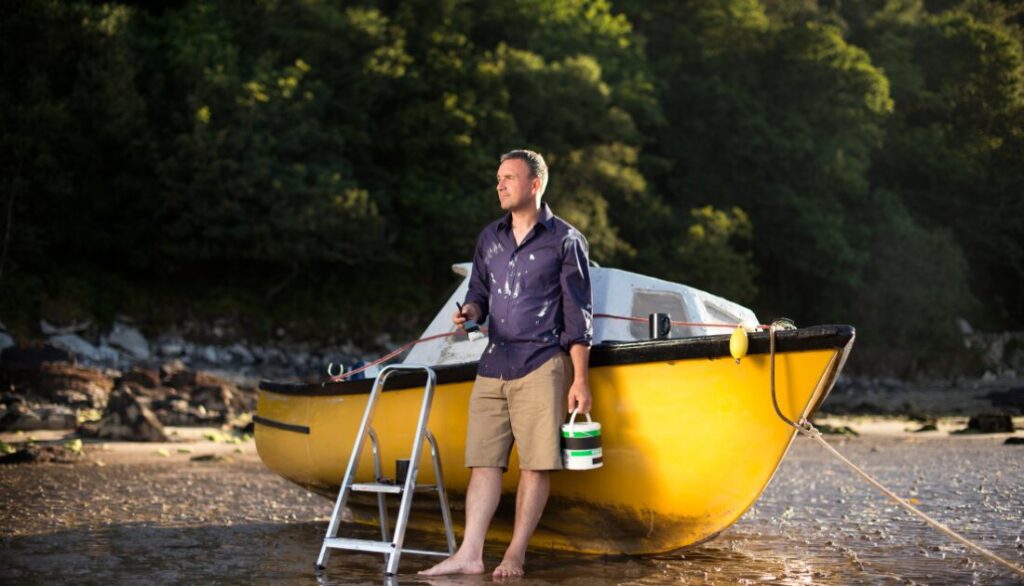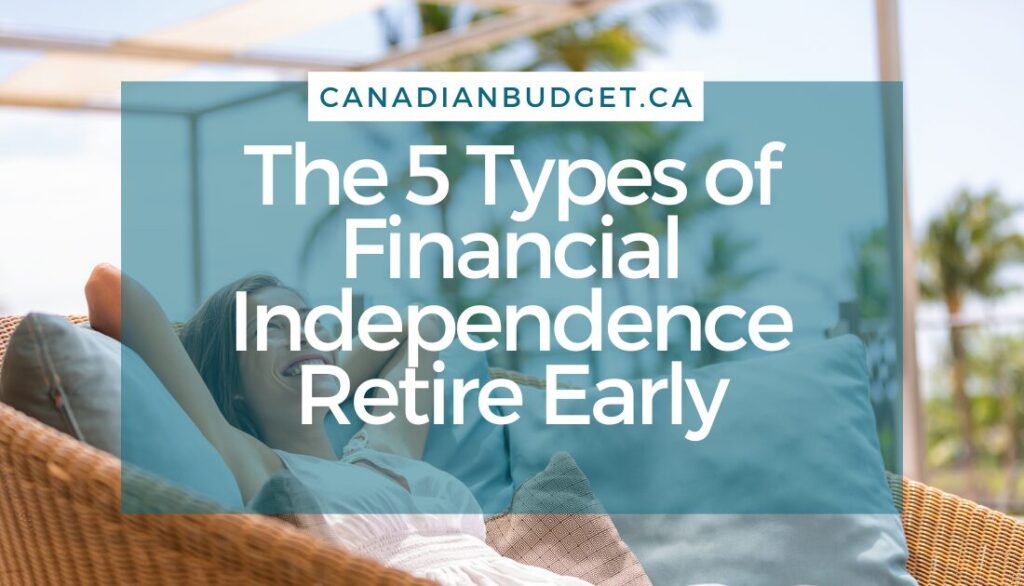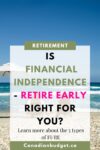Starting your journey towards Financial Independence Retire Early (FI/RE) in Canada opens up possibilities for those eager to take control of their financial future. The FI/RE movement, with its various approaches and strategies, offers a roadmap to achieving financial freedom and retiring early. From Lean FI/RE to Fat FI/RE, Canadians have multiple options to explore, each tailored to different lifestyles and goals. We will cover all the basics of FI/RE for Canadians interested in learning if this approach is right for them.
Understanding the FIRE Movement
The Basics of Financial Independence Retire Early
Financial Independence Retire Early (FI/RE) is a lifestyle movement focused on saving and investing to gain the financial freedom to retire much earlier than traditional retirement ages. The most well-known name in FIRE is Mr. Money Mustache, who retired at age 30! Many financial blogs like his shared their experience along the path to FIRE, making it an everyday concept today.
At its core, FI/RE centers on a simple principle: by living frugally and saving a significant percentage of your income, you can build a serious financial cushion to stop working for money sooner than expected.
Pursuing Financial Independence Retire Early requires a deep understanding of your expenses, a commitment to minimizing debt, and a strategic approach to growing your savings and investing. It’s not just about cutting back but making informed decisions that are in sync with your long-term financial goals. Ultimately, achieving financial independence gives you the power to choose how to spend your time, be it through early retirement or pursuing passions with less financial pressure.
What is Financial Independence?
Financial independence is when your investments have grown, so you no longer need to work for an income to cover your expenses. Your investment portfolio will be able to cover the costs of your needs. You have saved and invested a large enough nest egg to live off of without contributing further. At this point, you are free to quit working for money – although some decide to get involved in volunteering or continue working part-time for benefits or social interactions.

Calculating your Fire Number
The easy way to calculate your fire number is to find your annual expenses and multiply that by 25. The rule of thumb of 25 times your expenses is a starting point for many people trying to reach Financial Independence (FI).
The 4% rule
FIRE proponents usually aim to save and invest a minimum of 25x their annual expenses and plan to live off those savings by adhering to the 4% rule. The 4% rule is a well-known method for safely withdrawing 4% out of your portfolio each year while not running out of money through your extended retirement years. This rule comes from the Trinity Study, which popularized it for safe withdrawal rates.
Types of Financial Independence Retire Early (FI/RE)
The FI/RE community classifies Financial Independence Retire Early strategies into several types: Lean FI/RE, standard or regular FI/RE, Barista FI/RE, Fat FI/RE and Coast FI/RE. Each type of FI/RE caters to different preferences and life situations, offering flexibility in achieving financial independence and retiring early.
Standard FI/RE
This one is simple: Save and invest a significant portion of your income and retire whenever your portfolio reaches a balance equal to 25x your expenses.
Lean FI/RE
Lean Fire is the minimalist approach, where individuals live on a very frugal budget to save a higher percentage of their income. This route often leads to retiring early, but they would still maintain a modest lifestyle once they retire. Think living on $50k or less in annual expenses for a couple.
Barista FI/RE
Barista Fire is a middle-ground approach in which one might partially retire and work part-time for additional income and benefits, such as healthcare. This approach reduces the total savings needed and can provide a balance between work and leisure. You may withdraw from your accounts as you are partially retired but still maintain some work.
Fat FI/RE
On the opposite end is Fat Fire, which involves accumulating a more significant nest egg to afford a more luxurious lifestyle in retirement. This often requires a higher income and a longer time frame to achieve
Coast FI/RE
Coast FIRE is when you have hit the amount invested and saved where you no longer need to save for retirement but are not retired yet. After you cover your normal expenses, you can do what you like with your salary and spending because it no longer needs to go toward your retirement savings. You can coast to retirement from this point.
Is FI/RE Popular in Canada?
The Fire Movement is gaining traction in some circles in Canada due to a growing desire for a work-life balance and financial security amidst economic uncertainties. The appeal of FI/RE lies in its promise of freedom from the constraints of a traditional 9-to-5 job and the possibility of enjoying an extended retirement. With the rise of financial blogs, and influencers, younger Canadians are becoming aware of the importance of financial planning and the benefits of early investment and savings. However, as the cost of living rises, Canadians may find it difficult to believe they can pursue a path to FIRE.
Many online resources and communities, including blogs and Reddit, have also played a critical role in popularizing FI/RE and providing knowledge and motivational success stories. Moreover, the FI/RE movement aligns with values prioritizing quality of life and personal fulfillment over material wealth, making it an attractive path for Canadians seeking a more meaningful and self-determined life.

The Canadian Path to FI/RE
Building Your FI/RE Foundation: Saving and Investing
The foundation of achieving financial independence retire early (FI/RE) in Canada is built on two key pillars: saving and investing. Saving is the first step, which involves managing your budget to maximize the surplus you can set aside for the future. It requires discipline to cut unnecessary expenses and increase your savings rate. Investing is the next critical component, where you put your savings to work to generate passive income and growth over time.
Canadians have various investment options, such as Tax-Free Savings Accounts (TFSA), Registered Retirement Savings Plans (RRSP), and other tax-advantaged investment accounts. Diversifying your investments across various investment types can reduce your risk and enhance returns. By combining diligent saving with intelligent investing, Canadians can build the financial foundation necessary to support their FI/RE goals.
Utilizing accounts like the Tax-Free Savings Account (TFSA) allows Canadians to earn investment income tax-free. At the same time, the Registered Retirement Savings Plan (RRSP) can defer taxes until retirement, when you may be in a lower tax bracket. However, for FIRE followers who retire early, it may be many years until they are eligible for the Canada Pension Plan (CPP) and Old Age Security (OAS). Eventually, these benefit programs may serve as supplemental income sources in retirement.
Leveraging these products effectively requires understanding their features, contribution limits, and withdrawal rules to optimize your financial strategy for early retirement.
Realizing Your FI/RE Dreams
Steps to Start the FI/RE process
- Calculate your annual expenses
- Calculate your FI/RE goal
- Make a budget and a savings plan
- Automate savings & investing
- Live Frugally & Increase your savings rate
- Expand the gap between income and expenses, save and invest the difference.
Setting and Achieving Your FI/RE Goals
If the FIRE movement sounds like something you want to pursue, where do you start? Having clear and achievable goals can help you realize your financial independence retire early (FI/RE) dreams. Begin by determining the amount of money you need to support your desired lifestyle in retirement. This typically involves calculating your annual expenses and applying the 4% rule, which suggests you can safely withdraw up to 4% of your retirement portfolio each year. That could be from withdrawing dividends instead of reinvesting or by selling off a small portion of your shares.
After establishing your target number, create a detailed plan that outlines how much you need to save and invest each month. Monitoring your progress is crucial, so regularly review your finances and track your net worth to ensure you stay on track. Adjust your strategy as needed, considering any life changes or economic shifts.
Remember, the path to FI/RE is not just about reaching a financial target but about embracing a mindset of intentional living and making choices that align with your values and long-term vision.
Adapting Lifestyle Changes for FI/RE in Canada
Achieving Financial Independence Retire Early (FI/RE) in Canada often requires significant lifestyle changes to increase your savings rate. Those changes may involve downscaling your living situation, cutting unnecessary expenses, or adopting a more minimalist lifestyle. Instead of focusing on cutting take out coffees and Netflix, it’s essential to focus on reducing your largest expenses and recurring monthly costs, such as housing, transportation, and groceries, as these can dramatically impact your ability to save.
Additionally, finding ways to more more money now through side hustles or seeking higher-paying job opportunities can accelerate your FI/RE journey. The process is about finding a sustainable balance that supports your well-being while progressing towards your financial goals. Embracing these lifestyle changes can be empowering, as it places you in control of your finances and future.
You don’t always have to live an extremely frugal life to pursue FI/RE. High-income earners may find it very easy to get into the FIRE Movement if they don’t allow themselves to upgrade their lifestyles as they earn more money. This would allow them to keep costs low and increase their contribution toward reaching their FIRE goals.
Ensuring a Sustainable FI/RE Journey
Sustainability is critical for a successful financial independence retire early (FI/RE) journey. Developing a plan that is effective and resilient to life’s unpredictability is essential. This means having an emergency fund to handle unexpected expenses without derailing your investment strategy.
Diversifying your investment portfolio can mitigate risk and protect your assets against market volatility. Regularly revisiting and adjusting your financial plan can help ensure it remains aligned with your current circumstances and goals. Staying informed about economic trends and new investment opportunities that may enhance your journey is crucial. Maintaining a balance between frugality and enjoying life is essential for long-term sustainability. By preparing for contingencies and staying flexible, you can ensure that your path to Financial Independence Retire Early (FI/RE) is both enjoyable and enduring.


